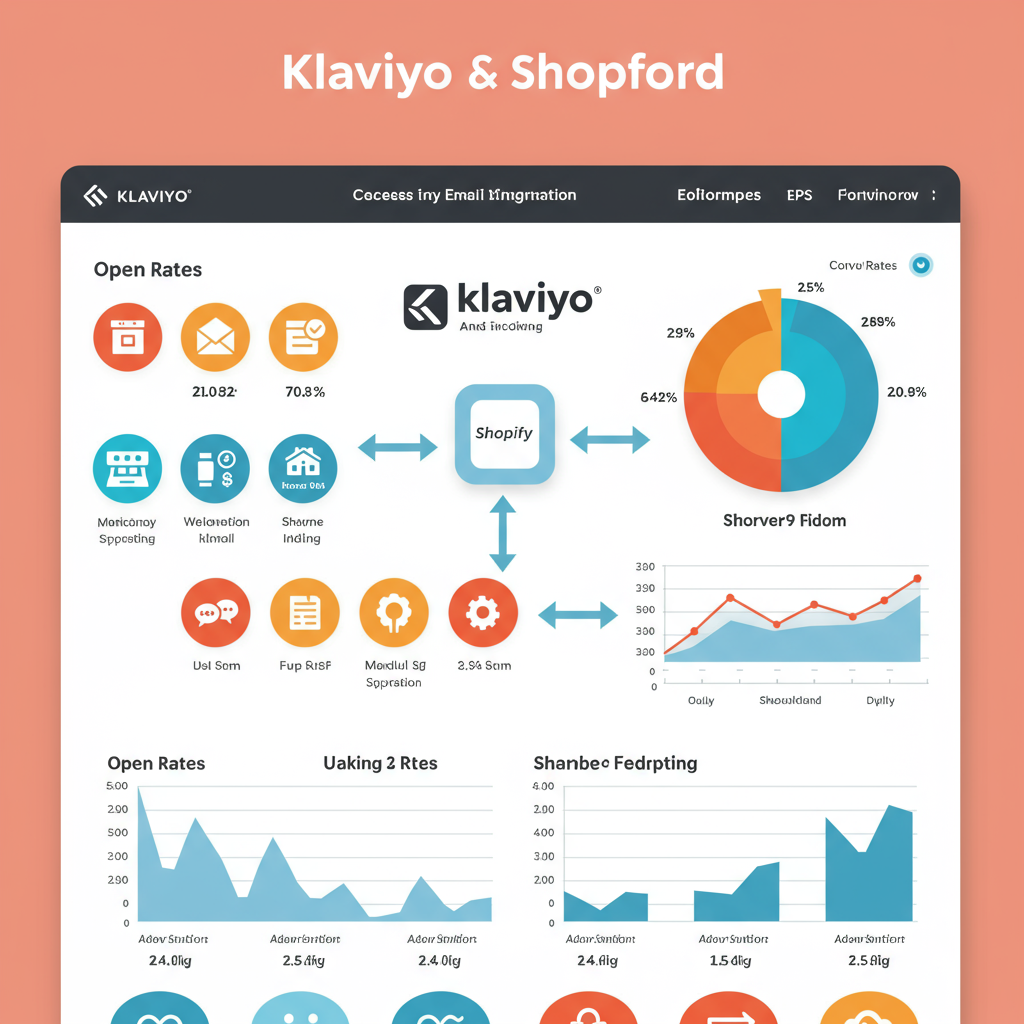Unlock the full potential of your e-commerce business with powerful email marketing automation and customer segmentation.
As a merchant navigating the competitive world of e-commerce, I quickly realized that simply having a great product wasn’t enough. Building lasting relationships with my customers and understanding their journey was paramount to sustainable growth.
That’s where email marketing came into play, and specifically, Klaviyo. For any Shopify store owner, integrating Klaviyo isn’t just an option; it’s a game-changer for driving repeat purchases and fostering loyalty.
In this guide, I want to share my personal journey and the practical steps I took to leverage Klaviyo with my Shopify store, transforming my customer engagement strategy.
The beauty of Klaviyo lies in its deep integration capabilities with Shopify. It pulls in all the crucial data points – purchases, browsing behavior, abandoned carts, and more – giving you a 360-degree view of your customers.
This rich data allows for unparalleled personalization, which, in my experience, is the secret sauce to effective email marketing.
So, how do you get started? The initial setup is surprisingly straightforward. First, I headed over to the Shopify App Store and searched for Klaviyo.
Once I found it, I simply clicked ‘Add app’ and followed the prompts to connect my Shopify store to my Klaviyo account. If you don’t have a Klaviyo account yet, it will guide you through creating one.
The integration process typically involves authorizing Klaviyo to access your Shopify data. This is a crucial step, as it allows Klaviyo to sync all your historical customer and order data.
I remember watching in real-time as my customer profiles, order history, and product catalog began populating within Klaviyo. It was fascinating to see all that information consolidated in one place.
Once connected, I always recommend verifying the integration. You can do this by checking the ‘Integrations’ section within your Klaviyo account to ensure Shopify is listed as ‘Connected’.
Now, with the data flowing, the real fun begins: leveraging Klaviyo’s powerful features. The first thing I dove into was segmentation.
Segmentation is Klaviyo’s superpower. It allows you to group your customers based on their behavior, purchase history, and demographics. I use it constantly to send highly targeted messages.
For example, I’ve created segments for ‘High-Value Customers’ (those who’ve spent over a certain amount), ‘Repeat Buyers’ (customers with 2+ orders), and ‘Engaged Subscribers’ (those who frequently open my emails).
Next, I focused on Flows, which are automated email sequences triggered by specific customer actions. These are the workhorses of my email marketing strategy.
My absolute go-to flow is the Abandoned Cart Reminder. I’ve set up a series of emails that automatically send to customers who add items to their cart but don’t complete the purchase.
My abandoned cart flow typically includes three emails: a reminder after an hour, a follow-up with a small incentive (like free shipping) after 24 hours, and a final nudge after 48 hours.
Another essential flow I implemented is the Welcome Series for new subscribers. This is my chance to introduce my brand, share my story, and offer a first-purchase discount.
I usually structure my welcome series with 3-5 emails, covering brand values, popular products, customer testimonials, and a clear call to action.
Post-Purchase Flows are equally vital for building loyalty. After a customer makes a purchase, I send automated emails for order confirmation, shipping updates, and later, a request for a product review.
I also use post-purchase flows to suggest complementary products based on their recent purchase, which has been incredibly effective for increasing average order value.
Beyond flows, I regularly use Campaigns for one-off promotions, new product launches, and seasonal sales. The ability to send these campaigns to specific segments ensures my messages are always relevant.
For example, if I’m launching a new collection, I’ll send an exclusive preview campaign to my ‘VIP Customers’ segment before making it public.
Collecting emails is also crucial, and Klaviyo’s Forms feature makes this seamless. I’ve set up various pop-ups and embedded forms on my Shopify store to capture new subscribers.
I always ensure my forms are visually appealing and offer a clear incentive, like a discount code, to encourage sign-ups. These new subscribers are then automatically fed into my Welcome Series flow.
My advice for any merchant starting out is to begin with the core flows: Welcome Series, Abandoned Cart, and Post-Purchase. Once those are optimized, you can explore more advanced flows like Browse Abandonment or Win-back campaigns.
Always remember to test your emails! I constantly A/B test subject lines, email content, and send times to see what resonates best with my audience. Klaviyo’s analytics make this easy.
Monitoring key metrics like open rates, click-through rates, and conversion rates is essential. This data tells you what’s working and what needs improvement.
Finally, don’t be afraid to experiment. The beauty of Klaviyo is its flexibility. Try different segments, unique offers, and creative content. The more you use it, the more powerful it becomes.
Klaviyo, when integrated thoughtfully with Shopify, transforms your email marketing from a chore into a powerful revenue-generating machine. It allows you to truly connect with your customers on a personal level, fostering loyalty and driving sales.
What do you think about this article? Did it help you understand how to leverage Klaviyo for your Shopify store?






